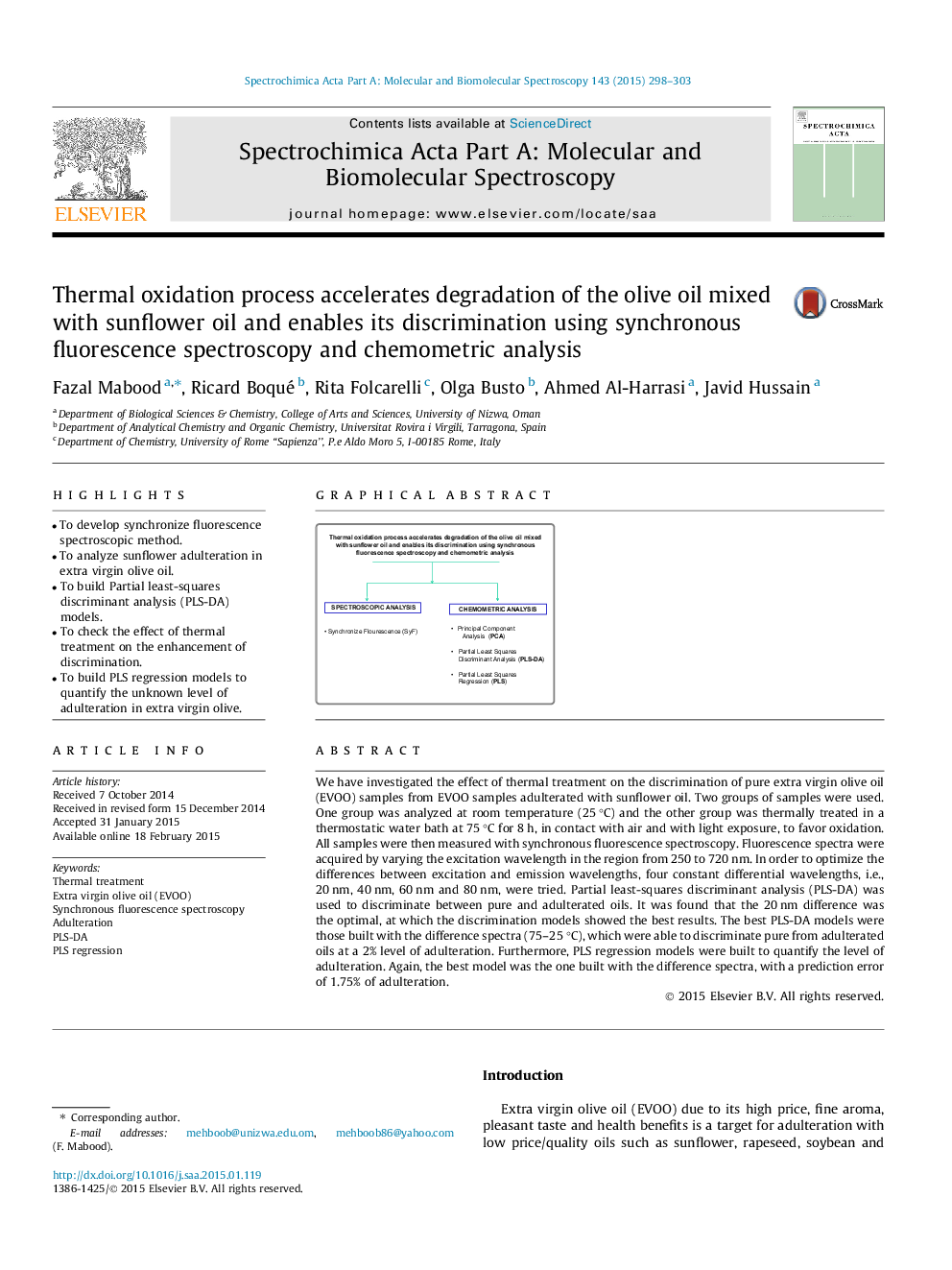| کد مقاله | کد نشریه | سال انتشار | مقاله انگلیسی | نسخه تمام متن |
|---|---|---|---|---|
| 1232227 | 1495226 | 2015 | 6 صفحه PDF | دانلود رایگان |
• To develop synchronize fluorescence spectroscopic method.
• To analyze sunflower adulteration in extra virgin olive oil.
• To build Partial least-squares discriminant analysis (PLS-DA) models.
• To check the effect of thermal treatment on the enhancement of discrimination.
• To build PLS regression models to quantify the unknown level of adulteration in extra virgin olive.
We have investigated the effect of thermal treatment on the discrimination of pure extra virgin olive oil (EVOO) samples from EVOO samples adulterated with sunflower oil. Two groups of samples were used. One group was analyzed at room temperature (25 °C) and the other group was thermally treated in a thermostatic water bath at 75 °C for 8 h, in contact with air and with light exposure, to favor oxidation. All samples were then measured with synchronous fluorescence spectroscopy. Fluorescence spectra were acquired by varying the excitation wavelength in the region from 250 to 720 nm. In order to optimize the differences between excitation and emission wavelengths, four constant differential wavelengths, i.e., 20 nm, 40 nm, 60 nm and 80 nm, were tried. Partial least-squares discriminant analysis (PLS-DA) was used to discriminate between pure and adulterated oils. It was found that the 20 nm difference was the optimal, at which the discrimination models showed the best results. The best PLS-DA models were those built with the difference spectra (75–25 °C), which were able to discriminate pure from adulterated oils at a 2% level of adulteration. Furthermore, PLS regression models were built to quantify the level of adulteration. Again, the best model was the one built with the difference spectra, with a prediction error of 1.75% of adulteration.
Figure optionsDownload as PowerPoint slide
Journal: Spectrochimica Acta Part A: Molecular and Biomolecular Spectroscopy - Volume 143, 15 May 2015, Pages 298–303
